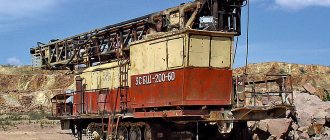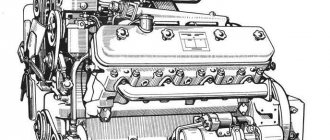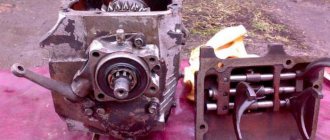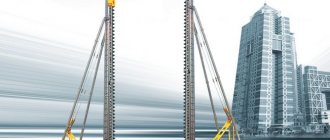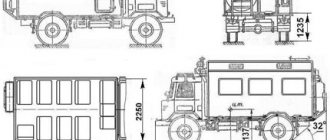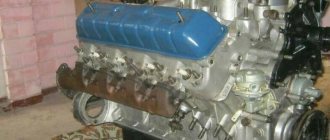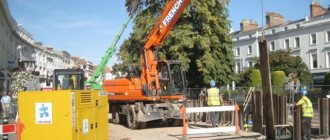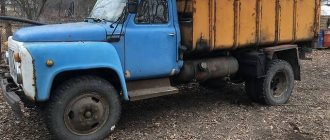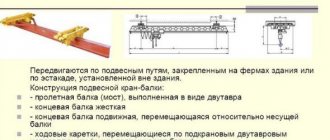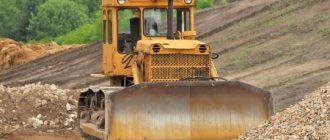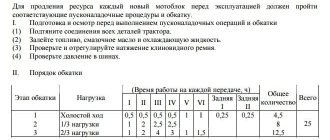Let's talk about what kind of drilling rigs there are for the extraction of hard and soft rocks - what characteristics they are chosen for, what role the nature of the proposed work plays in this.
The purpose of drilling rigs is to develop blast holes during mining operations. Installations are classified according to many parameters - drilling method, drive type, depth of penetration into the rock, moving technology. We remind you that for proper operation of the equipment it is necessary to buy high-quality coolant, which helps to avoid overheating and rapid wear.
Types of drilling rigs
The complex of devices and related units for well equipment is used in such industrial areas as:
- oil and gas production industry;
- construction;
- mining industry;
- during geological exploration.
Scientific research uses installations modified for the extraction of geological samples.
Drilling rigs are equipped depending on the following parameters:
- well purpose;
- taking into account climatic zones;
- soil parameters.
In construction and some geological exploration methods, mobile or self-propelled drilling rigs are used.
Portable complexes or individual structures are used for geological exploration in mountain ranges.
Depending on the technical parameters of the work, pile installations are classified according to the type of drive or power supply into the following subgroups:
- Diesel - low-power designs, drill up to 100 m, and are characterized by high mobility.
- Electric - the low power of the equipment allows you to install artesian wells in a short time.
- Electrohydraulic – the use of a common type of power allows the use of equipment in all areas.
- Diesel-electric – used in high-power equipment for use in hard rocks to significant depths (up to 6 thousand m).
Depending on the climate zone, the units have a category: floating drilling rigs (designed for work on water), land-based ones.
Design Features
DML units are mobile equipment; they are equipped with crawler tracks and hydraulic drive. The upper hydraulic drive is a development designed for drilling explosive-type wells up to 53.3 meters deep. When replacing the pipe, a depth of 62.5 meters can be achieved. For standard and additional pipes (9.15 and 10.7 m), additional carousels with different volumes are provided.
Photo of DML drilling rig
During drilling, a load of 267 kN is created on the bit. Additional equipment makes angular drilling possible when the column deviates from the vertical by 30 degrees or more.
Advantages:
- the ability to lift a column with a carousel, which contains six drill pipes, in less than a minute;
- the operator remotely, while in the cabin, changes pipes and secures the carousel; The cabin equipment is FOPS certified;
- visibility from the cabin allows you to control the operation of the rotor;
- the high-pressure compressor is equipped with an on-off system that eliminates the load during work not related to drilling;
- this simplifies startup, saves energy, and extends the life of the compressor;
- The DML drill rig is configured for high or low pressure drilling.
Classification of installations by drilling method
Several drilling methods are used to mechanically destroy rock.
Drilling machines
Auger. The technical parameters of the work involve cutting rock destruction by a drilling mechanism with its simultaneous release to the surface.
Roller ball. Rock destruction occurs by impact, in which the rock is abraded and carried to the surface by an air flow.
The rotary impact drilling method is carried out using machines with an installed pneumatic hammer. Rock ejection occurs due to the operation of additional equipment - a compressor.
Types of drilling rigs used for specific rocks
To drill wells that are technically suitable for a specific type of rock, several types of mechanisms are used.
Rotary drilling rigs. A rotating mechanism is installed at the face of the machine, which cuts out the rock. A weighted crown or chisel is used as a striker.
Rotary-impact installations. Rock cutting is carried out by simultaneous rotation of the face and impact strokes. The chisel or impact blank has a reinforcing amplifier. In some cases, a diamond crown is installed.
Impact (projectile) method. To make holes in loose, sedimentary rocks, a method is used based on impacts on an established face. The percussion drilling method is used to produce holes no larger than 100 m.
Impact drilling diagram
Vibration type structures. Vibration from the generator, which is the secondary machine of the drilling module, is supplied through the double pipe lines. The vibration probe cuts out the rock and throws it upward through adjacent mechanisms.
Fire-jet drilling complex. To install a well in hard, crystalline rocks, gas jets are used to destroy the soil base. The installation is brought into working condition with the help of gas, which produces combustion in the bowels.
Discharge-pulse drilling produces destruction and ejection of rock using electrical pulses. Used for deep work.
Explosive drilling is used for geological exploration in mountain ranges and hard-to-reach places.
Classification by type of drill rotator
Depending on the specifics of the rotational mechanism, structures are divided into several types.
Spindle rotator mechanism. Machines with this modification of the rotator are considered technically obsolete; they are used to complete wells up to 200 m in small industrial enterprises.
The installation of a rotary rotator allows the complex to be operated in sedimentary and rock formations at depths above average.
The movable rotator is a modern technology used in all industries, which makes it possible to produce holes in both ultra-deep and surface drilling.
Depending on the type of drilling base
If you already know where you have to drill and what kind of rock prevails there, then it is extremely important to choose the right type of rotator (rotary, spindle and moving) and the appropriate rock cutting tool. Spindle drilling rigs were produced and used in large quantities during Soviet times, but now their popularity is significantly decreasing. The rotary drilling rig is the ideal type of drilling rig for soft rock and medium hard rock areas, both shallow and deep. The movable rotator is the new standard - a unique solution that is optimal for deep and shallow drilling. The diamond or carbide base of the rock cutting tool will allow you to easily overcome even the strongest rock.
Types of work performed
Depending on the parameters of the tasks performed, the equipment in use has subcategories:
- operational equipment;
- reconnaissance devices;
- machines for technical and auxiliary processes.
Well types
Operational complexes are used for preliminary rock sampling for further work and soil research. During engineering work, the well parameter has insignificant depth.
Exploration vehicles are used for geological prospecting for minerals. In geological exploration they are used to find oil and gas.
In the same processes for studying water layers and drilling artesian wells.
Auxiliary equipment is used for making wells for piles in construction when laying foundations of various depths and purposes.
Classification of installations according to the depth of work performed
Based on the depth of the drilled well, drilling rig complexes are divided into:
- Surface (shallow) depth machines up to 600 m.
- Machines with average depth of wells up to 6 thousand m.
- Deep complexes over 6 thousand m.
Each machine can be equipped with electric, hydraulic or diesel drives. The method for obtaining wells depends on the configuration of the machine for the type of specific work.
Surface drilling modules are installed directly on the ground, regardless of whether a transport support or a portable unit is provided.
Marine complexes are installed on floating supports with different installation schemes to the underwater bottom. Shock-absorbing components allow operation with significant surface fluctuations.
Types of offshore platforms
Classification by mode of transportation
Drilling complexes have a typology based on the method of movement.
Portable
Small-sized portable drilling rig “Vector VR-2.120”
Small-sized equipment is used for drilling up to 200 m. These machines are lightweight (up to 1000 kg), can be quickly assembled on site, and do not require certificates of conformity for drilling operations. Since all elements of the unit are disassembled, transported and assembled on site directly, the second name for small-sized installations is portable drilling rigs.
An electric drive is most often used, since the required power is 220 V. Such units are most common when drilling water wells and artesian wells.
Portable hand
A type of small-sized equipment is used for repairing wells, in small-scale construction for holes for piles and pillars, and in the installation of heating systems.
Hand Drilling Rig
Self-propelled
The unit is located on a vehicle with a large carrying capacity. The unit is equipped with a frame and a cabin. No additional transport is required to move this type of equipment.
Universal drilling rig PBU-2
The unit is installed on the base of tracked tractors, all-terrain vehicles; the most common option is the KAMAZ frame. When using the installation for water drilling, boats or other water transport are used.
Self-propelled drilling rigs are used in the industrial sector for installing piles during industrial construction, in oil and gas production, and less often in small-scale farming. A hydraulic or mechanical system is used, powered by a drilling engine, an electric motor or a hydraulic motor.
The advantages of self-propelled drilling rigs include the following criteria:
- Possibility of use in difficult and mountainous areas by installing the unit on an appropriate base.
- Using the rope method for wells.
- The unit does not need to be dismantled after use.
- Possibility of operation as a stationary unit.
- Cheaper repairs compared to stationary machines.
Self-propelled units include the class of hydraulic machines. The advantage of the hydraulic system is that the unit does not require electrical power. Drilling is carried out due to the weight of the weighted drill.
Stationary
Drilling units equipped with additional supports and mounting elements. They are manufactured as a block module and are used in oil and gas production. The modules are equipped with towers with electronic control of drilling operations.
Purification systems, heating units and other equipment are installed in the modules as additional units. To produce oil wells at low temperatures, stationary drilling rigs are being developed with additional power supplies to maintain operating temperature.
Roller drilling machines General information. Operating principle and basic mechanisms
Roller drilling machines
General information. Operating principle and basic mechanisms
Roller-cone drilling machines are designed for drilling explosive vertical and inclined holes with a diameter of 160-450 mm and a depth of up to 60 m in quarries, during the construction of hydraulic structures, installation of piles in rock and permafrost in industrial and civil construction, as well as when performing drainage and other types work in rocks with a strength coefficient from 6 to 18.
The principle of roller-cone drilling is as follows. Torque and axial force are transmitted from the machine through the drill bit to the roller bit. When the bit rotates, the cutters, freely installed with the help of support bearings on the axes of the bit journals, roll along the face. In this case, the teeth penetrate into the rock and destroy it. Removal of destruction products from the bottom-hole zone and the well is carried out using water or compressed air supplied to the bottom of the well through the drill string from the pump or compressor unit of the machine.
In open-pit mining, roller-cone drilling was first used in the USA in 1939 for the production of mining equipment. This type of drilling was widely introduced only in 1945-47.” first in the quarries of the coal industry, then in ferrous and non-ferrous metallurgy. At first, water was used to remove destruction products from the well; later, compressed air was used. Currently, in the USA, Canada, Russia and other countries, roller-cone drilling is the main method for drilling blast holes in open-pit mining. With their help, about 85% of the volume of drilling work is carried out in quarries for the extraction of ores of non-ferrous and ferrous metals, precious metals and diamonds, and more than 50% in open-pit coal mining. Third generation drilling rigs are in operation (Table 1.3.).
Despite the variety of designs, roller drilling machines, as a rule, consist of the following main components: a running base, a frame on which mechanical, electrical, hydraulic equipment and a compressor unit are located, masts for
Rice. 1.13. Roller drilling machine ZSBSH-200-60
placement of the drill string, mechanisms for raising and lowering the mast, drill string rotator, tool lifting, mechanisms for extending and disassembling the drill string, leveling before drilling, feeding the drill string to the bottom, systems for cleaning the well from destruction products and dust collection.
The ZSBSh-200-60 (Fig. 1.13) and 6SBSh-200-40 machines produced in recent years have a thyristor drive of the rotator mechanism, cable drums, shock absorbers for the driver’s cabin, and increased productivity of hydraulic drive pumps, which reduces the duration of idling of the hydraulic chuck and leveling of the machine. The one-piece mast design with an open front panel provides better access to components. On the ZSBSH-200-60 rig, the length of the drill rods has been increased to 12 m, which, with a total number of them (five), makes it possible to drill wells up to 60 m deep. The drive power of the rotator (W) allows an increase in the torque on the drill string to 6000 Nm. The swivel has a spindle drive, which allows simultaneous screwing of the upper and lower nipples of the drill rod when extending and disassembling the drill string during the drilling process and at the end of its penetration, as well as reducing the time spent on auxiliary operations. In order to achieve smooth running, asynchronous motors with thyristor control stations are installed as a drive for the running mechanism.
The modernized dry dust collection system ensures that the air atmosphere in the machine operating area with respect to dust content is within acceptable sanitary standards. The cabin with a control panel is installed on spring shock absorbers, which significantly reduce vibrations in the workplace. To facilitate cable transfer during maneuvers and transfers, a cable drum is mounted on the machines. Thanks to the adopted changes in the machines, the unproductive time spent on auxiliary operations is improved, the productivity of the machine is increased, labor intensity is reduced and the comfort of work of the operating personnel is increased.
Since 1987, the Voronezh Mining and Processing Equipment Plant began serial production of SBSh-250MNA-32 machines (Fig. 1.14). These machines have a high level of mechanization of operations for assembling and disassembling the drill string, and provide automation of drilling modes and leveling of the machine. The main design differences are the equipment of the top drive of rotation of the drill string with a continuous feed stroke of 8 m with an air-water dust suppression system.
Fig.1.14. Roller drilling machine SBSH-250MNA 32
1 – mast, 2 – engine room, 3 – crawler bogies, 4 – dust suppression tank, 5 – driver’s cab front door
The SBSh-250-55 machine has the following features: installation of two separators on the mast, which allows drilling wells up to 55 m deep; triple rope-pulley supply system from two winches; increased outer diameter of the rod (from 203 to 219 mm), causing an increase in air flow speed in the annulus from 25 to 45 m/s; auxiliary operations for increasing the drill string during the drilling process have been mechanized.
Table 1.3
Technical characteristics of roller drilling machines
| Options | 3SBSH 200-60 | 6SBSH 200-40 | SBSH-250 MNA-32 (SBSh-250MN) | SBS 250-55 | SBSh-270I3 | SBSH-320-36 |
| 1 | 2 | 3 | 4 | 5 | 6 | 7 |
| Well: | ||||||
| diameter, mm | 215,9; 244,5 | 215,9; 244,5 | 244,5; 269,9 | 244,5; 269,9 | 244,5 | 320 |
| depth, m | 60 | 40 | 32 | 55 | 32 | 36 |
| Drilling direction to vertical, degrees | 0; 15; 30 | 0; 15; 30 | 0; 15; 30 | 0; 15; 30 | 0; 15; 30 | 0 |
| Barbell: | ||||||
| outer diameter, mm | 180 | 180 | 203 | 219 | 273 | |
| length, m | 12 | 8 | 8 | 11.3 | 11 | 18.3 |
| number, pcs | 5 | 5 | 4 | 5 | 3 | 2 |
| Feed stroke of drilling tool, m | 1 | 1 | 8 | 11 | 17.5 | |
| Feed force, kN | 0-300 | 0-300 | 0-300 | 0-350 | 0-450 | 0-600 |
| Feed speed to face, m/s | 0.033 | 0.025 | 0.017 | 0.025 | 0.035 | 0.014 |
| Drilling tool rotation frequency, s1 | 0.2-2.5 | 0.25-2.5 | 0.2-2.5 | 0.2-2.16 | 0.2-2.5 | 0-2.1 |
| Torque on drilling tool, kNm | 6 | 3.2-5.2 | 4.2 | 4.2 | 8.7 |
Continuation of Table 1.3
| 1 | 2 | 3 | 4 | 5 | 6 | 7 |
| Compressor capacity, m3/s | 0.417 | 0.417 | 0.417 | 0.417 | 0.834 | |
| Stroke type | E-1602 | UG-60 | UG-60 | UG-70 | EG-400 | |
| Machine weight, t | 62 | 59 | 71,5 | 85 | 110 |
The SBSh-270I3 machine manufactured by the plant carries out the drilling of blast holes in rocks of any strength using the open-pit method of mining. The drilling rig is equipped with a spacious cabin that provides the operator with good visibility and work in compliance with all safety standards regarding the influence of external factors (noise, vibration, dust, lighting, temperature).
The main technological parameters of drilling are displayed on color scales and a digital indicator (drilling depth, drill string rotation speed, feed force, load on the rotator motor, penetration speed).
The mechanisms of the machine (drill rod rotator, feed, stroke) are driven by DC motors powered by thyristor converters. The control system ensures high factory readiness and is equipped with diagnostics with the ability to replace cells and blocks without adjusting the system.
The SBSh-320-36 machine is designed for drilling wells with a diameter of 320 mm and a depth of up to 36 m with an axial force of up to 600 kN in rocks with a strength coefficient of up to 18. The continuous feed stroke (17.5 m) is carried out by two ropes, forming four five-fold pulleys, two of which are located below the head of the drill string, and two are located above. The winches, on the drums of which ropes are wound, are driven by hydraulic motors during drilling, and by electric motors during hoisting operations. The increased air consumption per unit of face area compared to other machines makes it possible to increase the efficiency of cleaning the well from destruction products and the drilling speed. Greater rigidity of the metal structure of the machine is achieved through the use of a truss-type frame and installation of the machine when drilling on four hydraulic jacks. Two cable drums are installed in the rear part of the frame, allowing for mechanized cleaning and carrying of cables when moving the machine.
